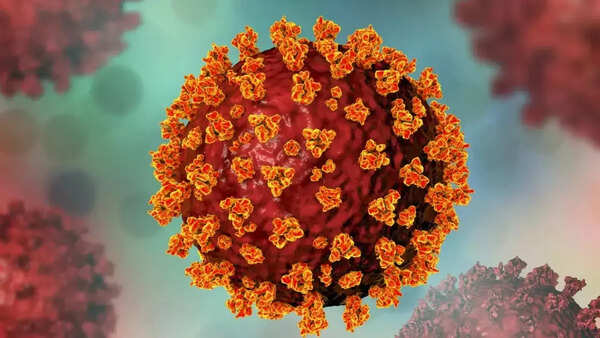Koronovirus Symptoms: New Covid variant Sparks anxiety: What initial symptoms appear here.

A newly identified version of Covid-19, named NB.1.8.1, is recorded in the United States, after an increase in cases seen in China. Data from the Disease Control and Prevention Center (CDC) indicates that this stress has been discovered in international travelers at various American airports.
Extension of new stress:
Recent reports have also emerged as stress found in the community, suggesting that it can spread locally.In some regions of Asia, NB.1.8.1 Covid-19 is associated with an increase in cases. In particular, the percentage of severely sick respiratory patients in China with Covid-19 has increased from 3.3% to 6.3% compared to the previous month, and the rate of A&E patients doing positive testing for virus in Chinese hospitals has increased from 7.5% to 16.2%. Additionally, Taiwan has experienced a 78% increase in entry into the hospital due to Kovid.In Hong Kong, where hospitalized, reached a height of 12 months, officials are urging residents to wear face masks in public transport and crowded settings. The World Health Organization (WHO) has stated that, while NB.1.8.1 has more ability to bind human cells – to make it more transferable – currently there is no evidence to suggest whether it causes more serious illness or better in developing immunity than other variants.

How did the new tension reach America?
The new Covid-19 cases identified in the US started mainly from travelers coming from nine countries: China, Japan, Vietnam, South Korea, Taiwan, Thailand, France, Netherlands and Spain. The test for the variant was conducted on individuals between 22 April and 12 May, allowing voluntary nose swabs at airports as part of a program.Health officials have reported examples of variants from Ohio, Road Island and Hawaii, as well as dating back in the late March and early April with cases in the states of California and Washington. Despite these new cases, there has been no same increase in positive covid-19 tests in the US, the latest data shows a reduction of 12% in the testing swab that detects the virus.

To see the early symptoms of nb.1.8.1:
Individuals infected with the NB.1.8.1 edition have reported several symptoms, some of which differ from those associated with the earlier strains of the virus. Common early symptoms include:Hypertermia of continuous lower-grains: Instead of high fever, many individuals experience continuous low-grain growth in body temperature (between 37.6 ° C and 38.1 ° C) without specific sweat or rapid breathing. This condition, known as hyperthermia, may indicate an issue with the thermoregulation mechanism of the body. Upper respiratory symptoms: Along with other Omikron subveriants, nb.1.8.1 usually presents with symptoms such as sore throat, cough, flowing nose and mild fever.Gastrointestinal crisis: Some individuals have reported nausea, loss of appetite and gastrointestinal discomfort.Neurological Symptoms: Headache, dizziness and examples of people who are difficult to focus.Fatigue and unhealthy: Excessive fatigue and muscle weakness are mentioned, which makes daily activities challenging for some individuals.Sleep disturbances and anxiety: The UK reports highlight that some individuals are infected with the JN.1 version, a close -related stress, experienced anxiety and trouble in sleeping.

Preventive measures and recommendations:
Given the ability to spread rapidly for nb.1.8.1, especially among international travelers, health officials recommend the following preventive measures:vaccination: To reduce the risk of severe illness, ensure that vaccinations are updated, including any recommended booster.Mask-wiring: In crowds or attached places, wearing masks can help reduce the transmission of the virus.Hand hygiene: Wash hands with soap and water regularly or use hand sanitizer to reduce the risk of infection.Symptoms of surveillance: Be cautious about any symptoms mentioned above and if they develop, pay medical attention.Solitude: Individuals who experience symptoms should be self-separated to prevent the virus from spreading to others.




